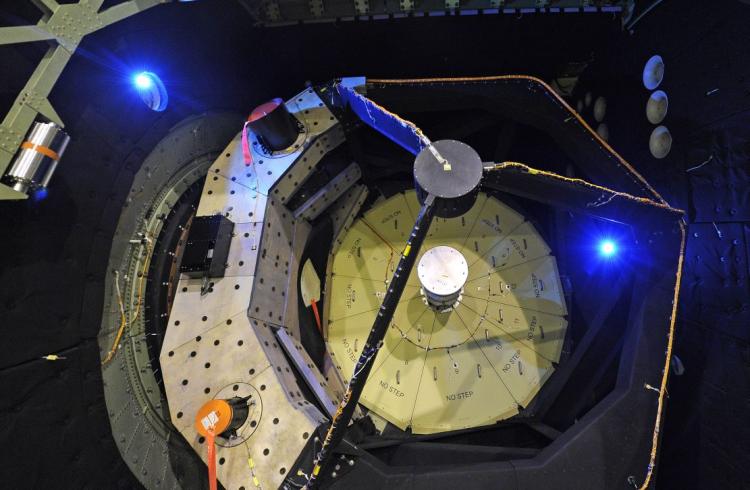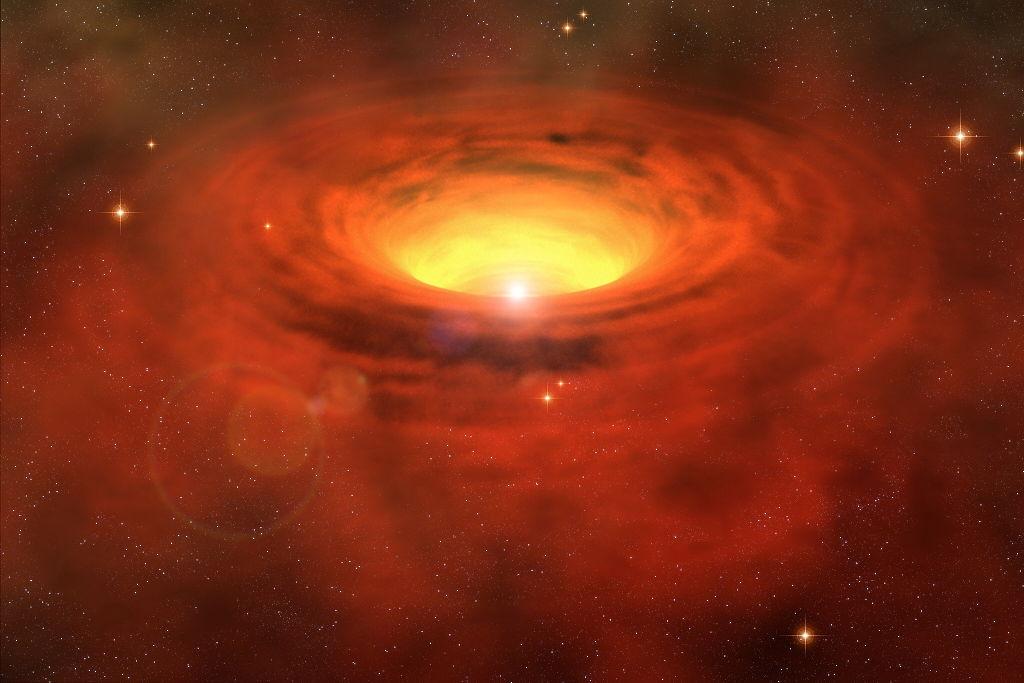NASA’s airborne observatory - the Stratospheric Observatory for Infrared Astronomy (SOFIA) telescope - took its first flight in May and the images from the flight are currently being analyzed by experts at NASA, according to reports on May 28.
More images from the telescope will be released to the public later in the year.
SOFIA was created by a joint effort between NASA and the German Aerospace Center, Deutsches Zentrum für Luft- und Raumfahrt (DLR). The massive 17-ton telescope is carried inside of a airplane, enabling it to be flown to altitudes of 39,000 to 45,000 feet to view objects from distant galaxies.
SOFIA is being used to analyze different elements in space using infrared spectrum measurement technology. By being flown to high altitudes, the telescope is above 99 percent of the water in the Earth’s atmosphere that restricts the view of ground-based telescopes in the infrared spectral range.
“The crowning accomplishment of the night came when scientists on board SOFIA recorded images of Jupiter at wavelengths unobservable by either ground-based observatories or current space telescopes,” said SOFIA adviser Eric Becklin after the first flight on May 26th.
The images were recorded with the new Faint Object Infrared Camera Telescope (FORCAST) that is exclusively featured on the airborne SOFIA space observation telescope. The FORCAST infrared telescope was built at Cornell University and is 2.5-meters long.
The mid infrared telescope focuses on wavelengths of light between 5 to 40 microns. A human body emits infrared radiation at a wavelength of about 10 microns. With the SOFIA project, NASA scientists will able to see objects that would normally be invisible to the naked eye such as cosmic gases. Scientists are also able to observe temperature changes in space.
NASA also worked with DLR to establish the highly successful Gravity Recovery and Climate Experiment (GRACE). GRACE has provided highly accurate maps to allow scientists to track water movement around the globe, and has been used to measure the breakup of Greenland’s ice sheets. GRACE was granted an extension last month to continue until 2015.
More images from the telescope will be released to the public later in the year.
SOFIA was created by a joint effort between NASA and the German Aerospace Center, Deutsches Zentrum für Luft- und Raumfahrt (DLR). The massive 17-ton telescope is carried inside of a airplane, enabling it to be flown to altitudes of 39,000 to 45,000 feet to view objects from distant galaxies.
SOFIA is being used to analyze different elements in space using infrared spectrum measurement technology. By being flown to high altitudes, the telescope is above 99 percent of the water in the Earth’s atmosphere that restricts the view of ground-based telescopes in the infrared spectral range.
“The crowning accomplishment of the night came when scientists on board SOFIA recorded images of Jupiter at wavelengths unobservable by either ground-based observatories or current space telescopes,” said SOFIA adviser Eric Becklin after the first flight on May 26th.
The images were recorded with the new Faint Object Infrared Camera Telescope (FORCAST) that is exclusively featured on the airborne SOFIA space observation telescope. The FORCAST infrared telescope was built at Cornell University and is 2.5-meters long.
The mid infrared telescope focuses on wavelengths of light between 5 to 40 microns. A human body emits infrared radiation at a wavelength of about 10 microns. With the SOFIA project, NASA scientists will able to see objects that would normally be invisible to the naked eye such as cosmic gases. Scientists are also able to observe temperature changes in space.
NASA also worked with DLR to establish the highly successful Gravity Recovery and Climate Experiment (GRACE). GRACE has provided highly accurate maps to allow scientists to track water movement around the globe, and has been used to measure the breakup of Greenland’s ice sheets. GRACE was granted an extension last month to continue until 2015.






